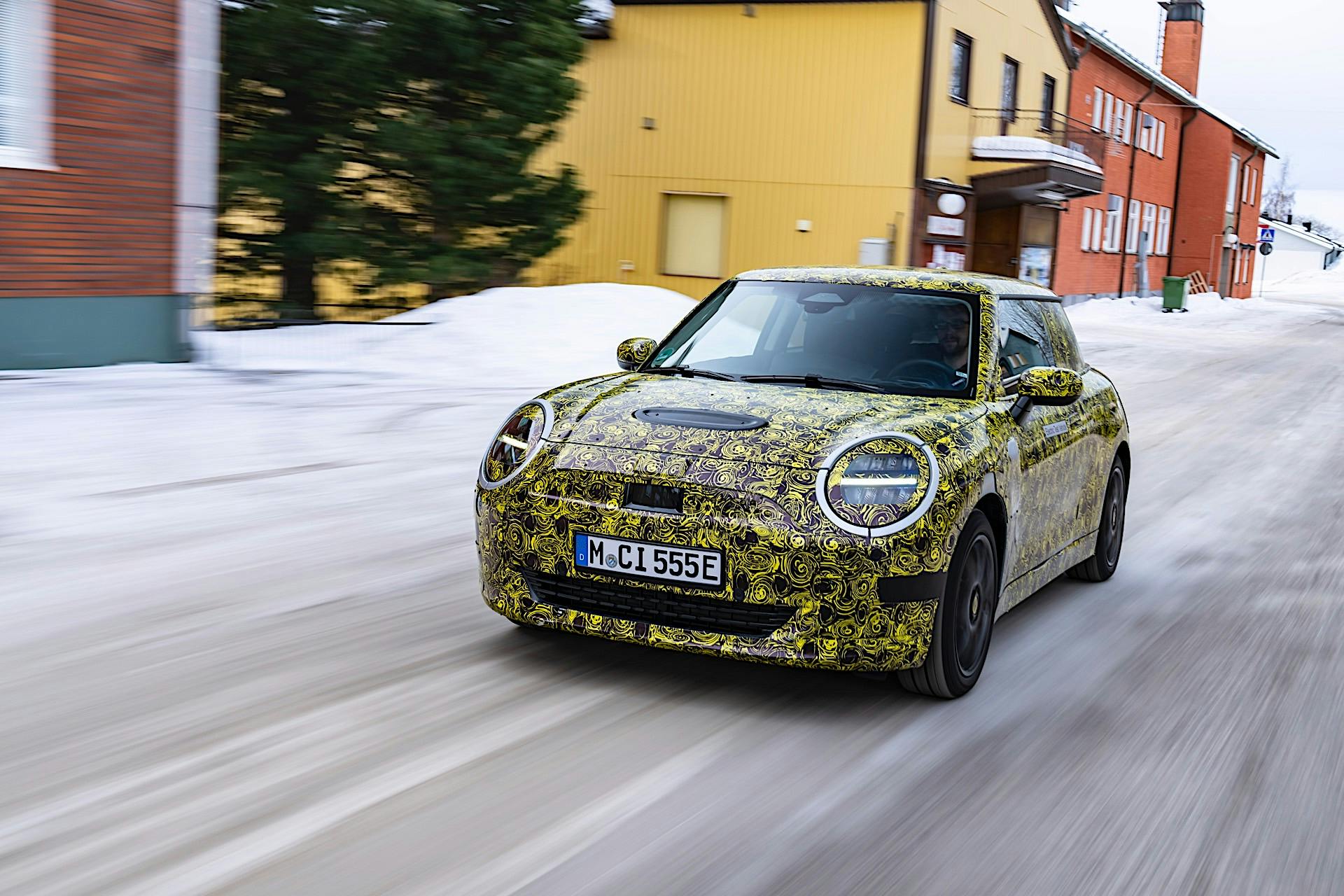Mini recently previewed its next-generation, all-electric Hardtop with photos of a camouflaged prototype undergoing cold-weather testing. It revealed that the upcoming iteration of the quirky hatchback was developed with a battery-electric variant from the start. Luckily, Mini also invited some European outlets to take part in ride-alongs during the evaluation session and the U.K.’s Autocar was one of those. It learned that the internal combustion and electric variants of the Hardtop won’t be sharing underpinnings and that the latter will have two battery options.
The current Mini Cooper SE Hardtop is based on the BMW Group’s UKL platform, which wasn’t designed with electrification in mind. For the fourth generation, the two variants will be on different architectures. The internal combustion version will be on the new FAAR platform that first appeared on the second-generation BMW 2 Series Active Tourer. Its all-electric sibling, on the other hand, will be on a dedicated battery-electric vehicle platform that BMW Group developed with Great Wall Motor. A new plant in Zhangjiagang, China, which will be operated by both companies’ joint venture called Spotlight Automotive, is where the all-electric Hardtop will be built.
Mini told Autocar that this should result in a vehicle that’s not compromised like the current Cooper SE and allow it to use larger battery packs. It was also adamant that the development of the vehicle was done in-house by its engineers and is being worked on side-by-side with the internal combustion version to ensure that it drives like a Mini. Two battery packs will reportedly be on offer; the standard 40-kWh unit will be backed by a 181-hp electric motor, which should effectively give it more range than the current car’s 32.6-kWh pack that has a usable capacity of 28.9 kWh. This version should have a range of 185 miles in the WLTP cycle. The more powerful Cooper S will use a 50 kWh and a 221-hp electric motor, allowing it to travel around 250 miles per charge (WLTP Cycle).
Autocar also noted that although the new car will get bigger battery packs, they’ll be lighter than the current Cooper SE. This is mainly due to the BEV-specific platform, which will also result in a lower center of gravity and a slight rear bias in weight distribution. Mini will also retain the independent suspension in all four corners.
In terms of size, the new all-electric Hardtop will get shorter front overhangs, cutting its overall length. Mini is aiming to bring it closer to the original 1959 Mini designed by Sir Alec Issigonis and the first-generation BMW-design Mini Hardtop, codenamed the R53. Despite shrinking in length, the wheelbase will increase by 40 mm or 1.5 inches and the track will be widened, which should increase interior space. Oliver Heilmer, Head of Design at Mini, told Autocar that he is aiming to keep the design as clean as possible, removing all ornamental bits. This means the new car is ditching things like the clamshell hood and plastic wheel arch extensions.
The new Mini Hardtop is the first of four vehicles in the brand’s new model offensive and will also initiate its move towards full electrification. It will be followed by the third-generation Countryman crossover, which will be offered in internal combustion, plug-in hybrid, and battery electric configurations. A second smaller utility vehicle, Mini’s first dedicated BEV, will arrive not long after the new Hardtop and Countryman and could revive the Paceman name. Finally, the next-generation Convertible arrives by 2025.

